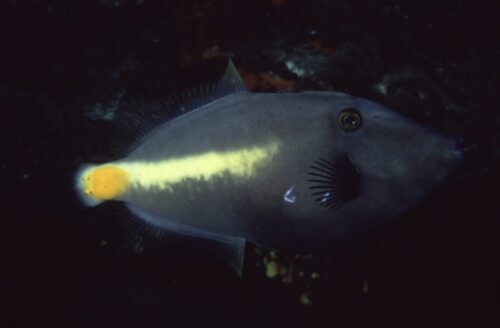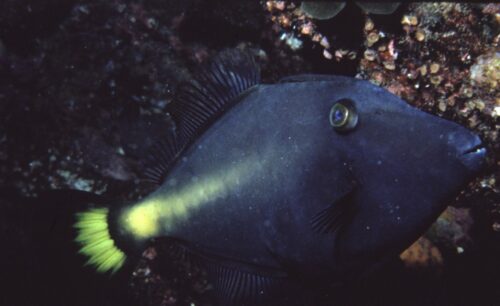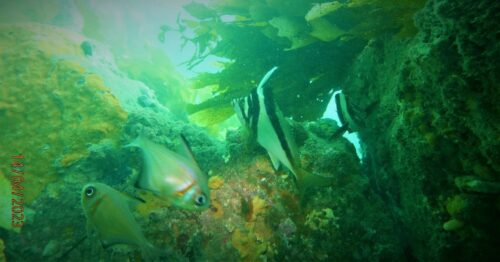Further sightings of the Western Crested Morwong at Port Noarlunga is a good summary of what we have learned about the Western Crested Morwong’s presence in SA. Interesting that, as far as I know, these recent sightings have all been at Port Noarlunga Reef and under the outer jetty. This flags 2 obvious points:
1: at a place so heavily visited by snorkellers and divers anything new* will probably be spotted soon after arriving, and
2: I wonder how long it will be till further records of this species occur anywhere between Ceduna and Noarlunga, because presumably they didn’t just arrive as planktonic larvae at Noarlunga.
* (New with regards to range extensions mainly but also return of species that once occurred there, and have returned following provision of additional MPAs as stepping stones e.g. juvenile Western Blue Groper which now have refuges at Rapid Head and Carrickalinga Cliffs GSZ zones)
Perhaps the new shellfish reefs along the Adelaide coast will help, along with Edithburgh Jetty’s high diver visitation rate.
I wouldn’t be surprised if Western Crested Morwong start appearing further south than Noarlunga e.g. the Rapid Bay jetty T Junction, maybe on the live stream video we’ve all got access to courtesy of the AusOcean team.)

Adult male yellow-striped leatherjacket
Another thing that is worth mentioning is that the occasional Longspine Leatherjacket has been seen at Rosetta Head Encounter Bay (Research Grade observation on iNaturalist last year) and probably also at Rapid Bay but with less confidence. This species is not usually found in SA. It looks a bit like a young Yellow-striped Leatherjacket, Meuschenia flavolineata, but without a distinct caudal stripe.

Adult female yellow-striped leatherjacket
All in all I think we SA divers are now witnessing the beginning of an increasingly fast and very worrying shift in ranges of numerous temperate southern Australian inshore reef fish species, with some ranges shrinking and others broadening. This makes sense in the global warming context, as we’ve traditionally been fairly isolated (minimal intermixing of East and West Coast fauna over millennia, because we’re at the middle of the vast length of this continent’s south facing coastline, with relatively minor planktonic larval soup incursions via the main longshore currents of the eastern and western seaboards).

Western Crested Morwong
We should not be lulled into thinking our coastal reefs will benefit from increasing fish species numbers. As with Tasmania’s eastern coast, some of our most iconic species are likely to become endangered or extinct, even though we may find it exciting to see ‘new arrivals’ like this Western Crested Morwong.

